Cycle : Simplest yet Fastest Way to Deploy Containers
October 19, 2016
What is Cycle ?
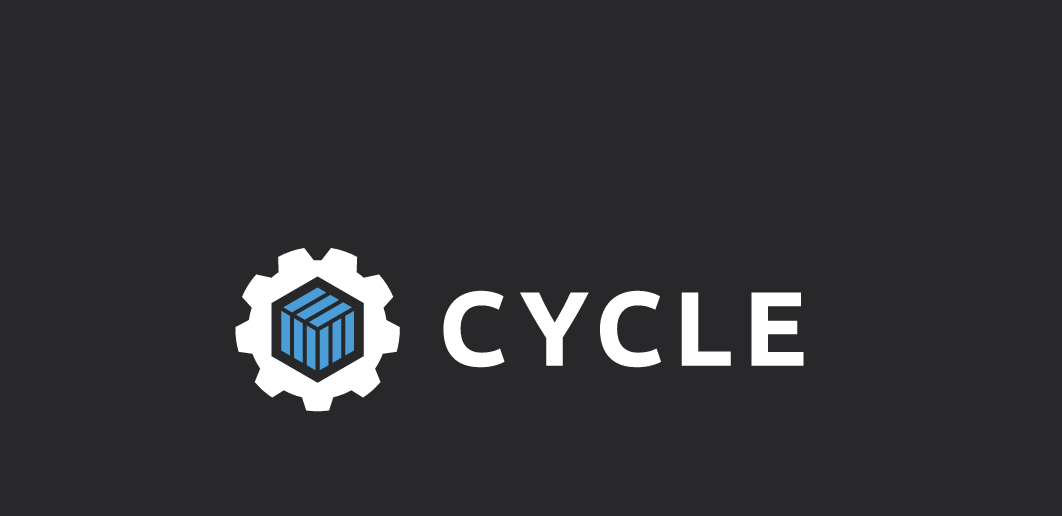 

Cycle is simple and smart way to orchestrate your containerized applications without worrying about the underlying setup. I believe this tutorial will help you get started with Cycle in under 5 minutes.
How to Deploy Containers in under 5 minutes ?
This is not one of those tutorial where I lure you in with an snazzy tag line and then preach you about how good and bad is my solution is. This is a simple tutorial to get a full-stack containerized application deployed and available globally, under 5 minutes.
Wait, Containers, Whatt ?
Containers are a method of operating system virtualization in which your applciations and their dependencies, can run in an resource-isolated environment. Containers can help ensure that applications deploy quickly, reliably, and consistently regardless of deployment environment. Docker is one such software containerization platform which is quite popular and fits well in the micro-service architecture. I have been dockerizing my applications as it makes it easier to move across platforms.
Okay, Now Lets Start!
I have developed a Full-Stack application that is a Robo-Advisor for micro-investments. It’s developed in Angular 1.5 web app and connects to a backend build in NodeJS to process the inputs and generate an investment plan. I have containerized the frontend and backend images and you can find them here & here. You can either follow the instructions below or simply watch ‘ 4 min tutorial ’ uploaded here.
Getting Started in 4 steps.
This is the most simplest getting started instructions i have come across. The below instructions simply follow the four steps listed below.
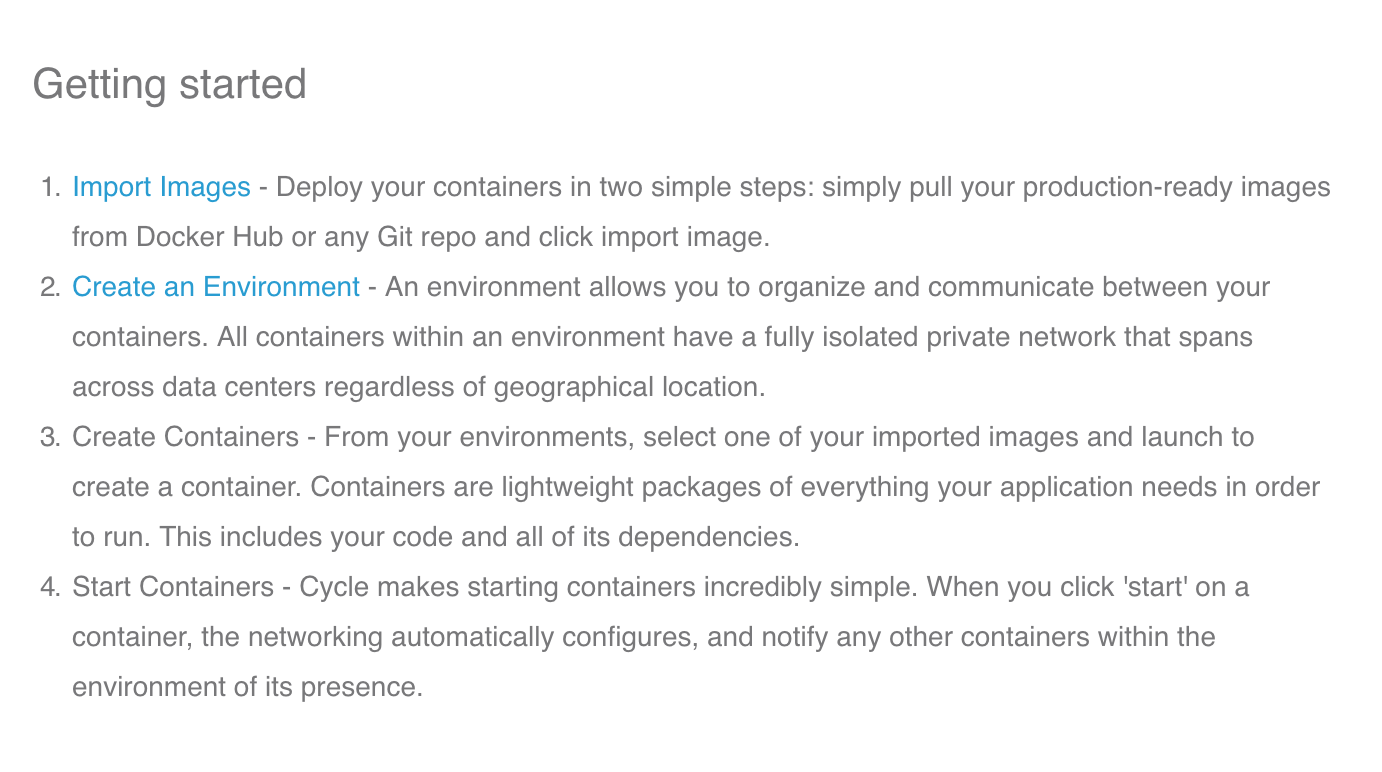 

Import the Cycle Frontend Image
Login to your cycle account or sign up to create one.
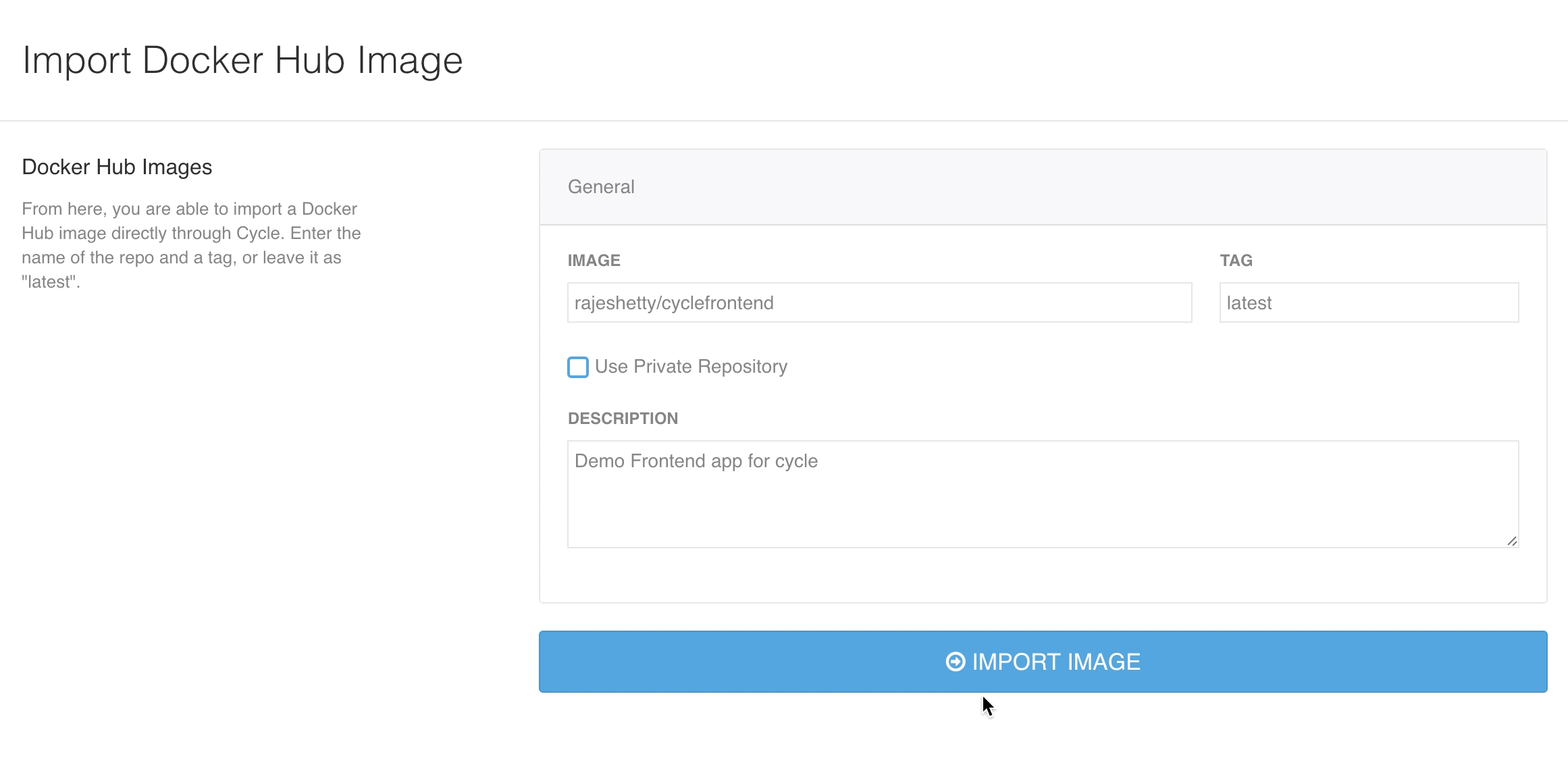 

Sit back for a minute while till you get this screen.
 

Create an environment.
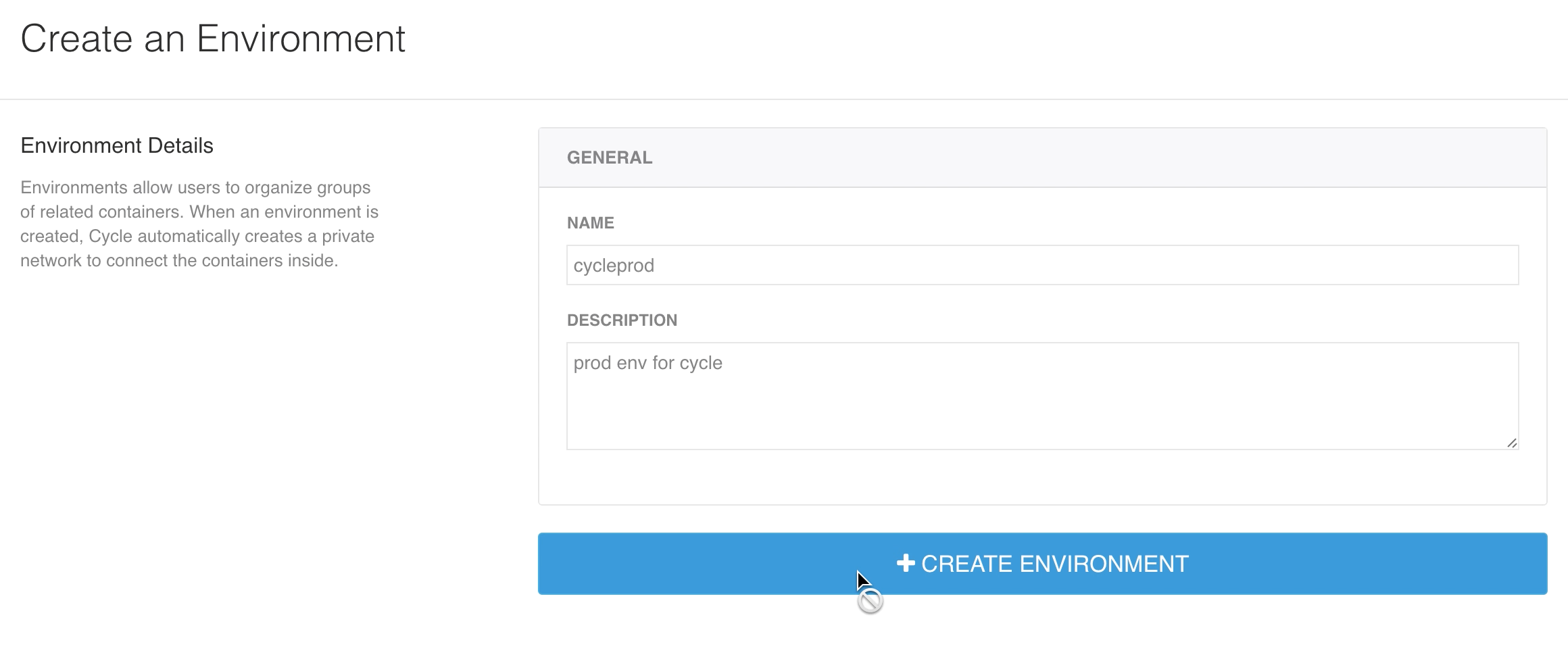 

Create an container within the environment
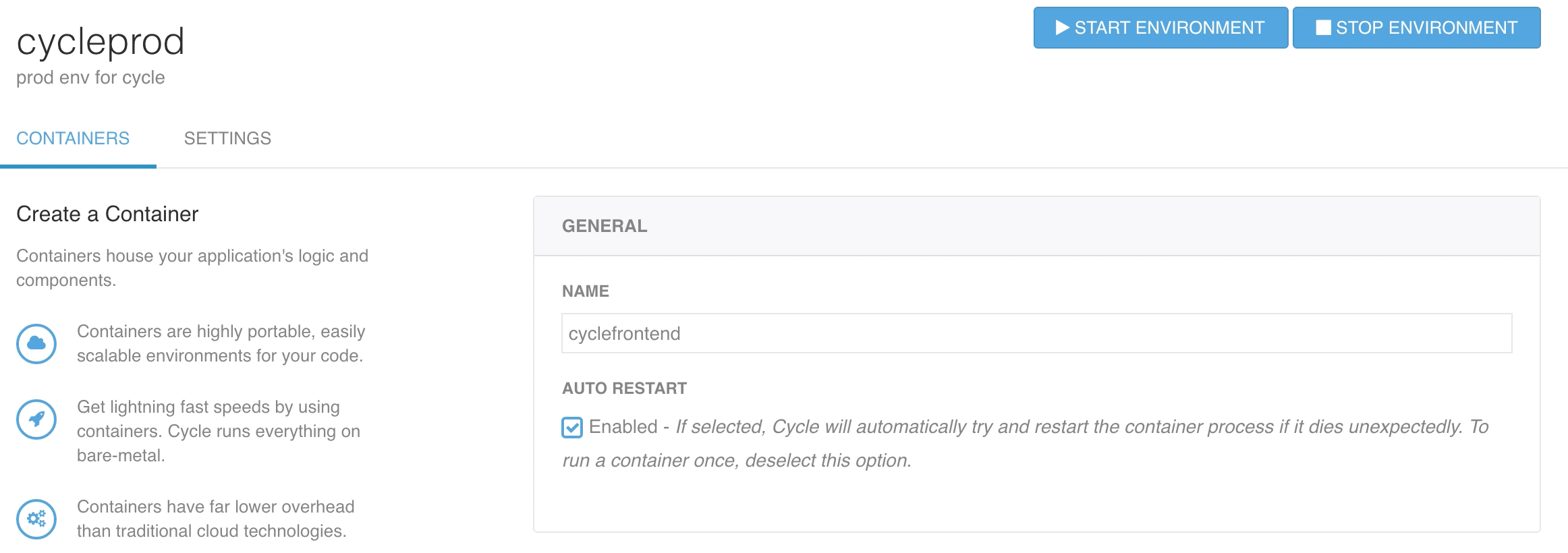
Use our imported image to create a container.

Choose and appropriate plan.
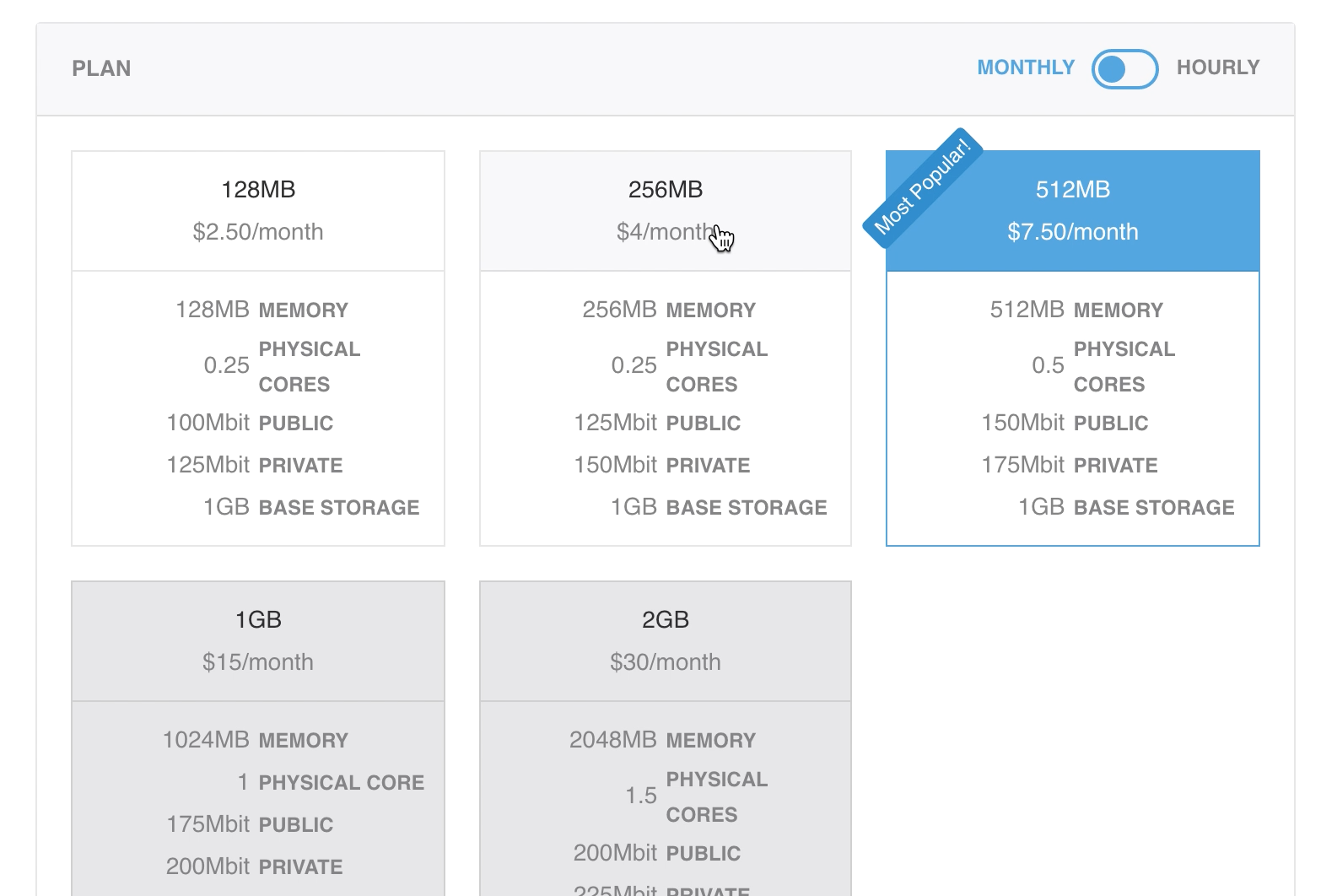
Scale as much as you want.

Start the environment

Once the container is started you can see the assigned Public IP address.
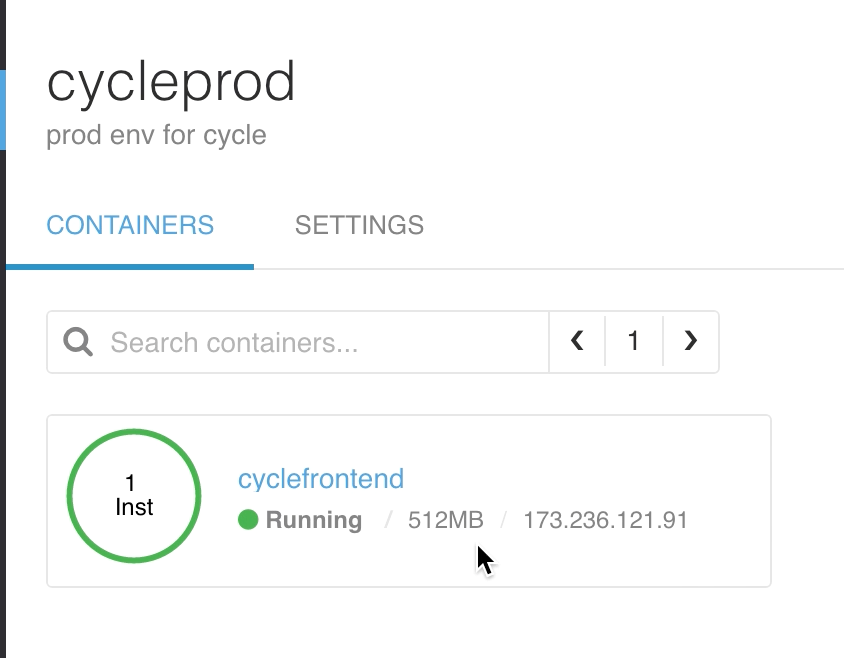
Test the Application
The application is now publicly available and you can test it here.
A similar process followed for the backend
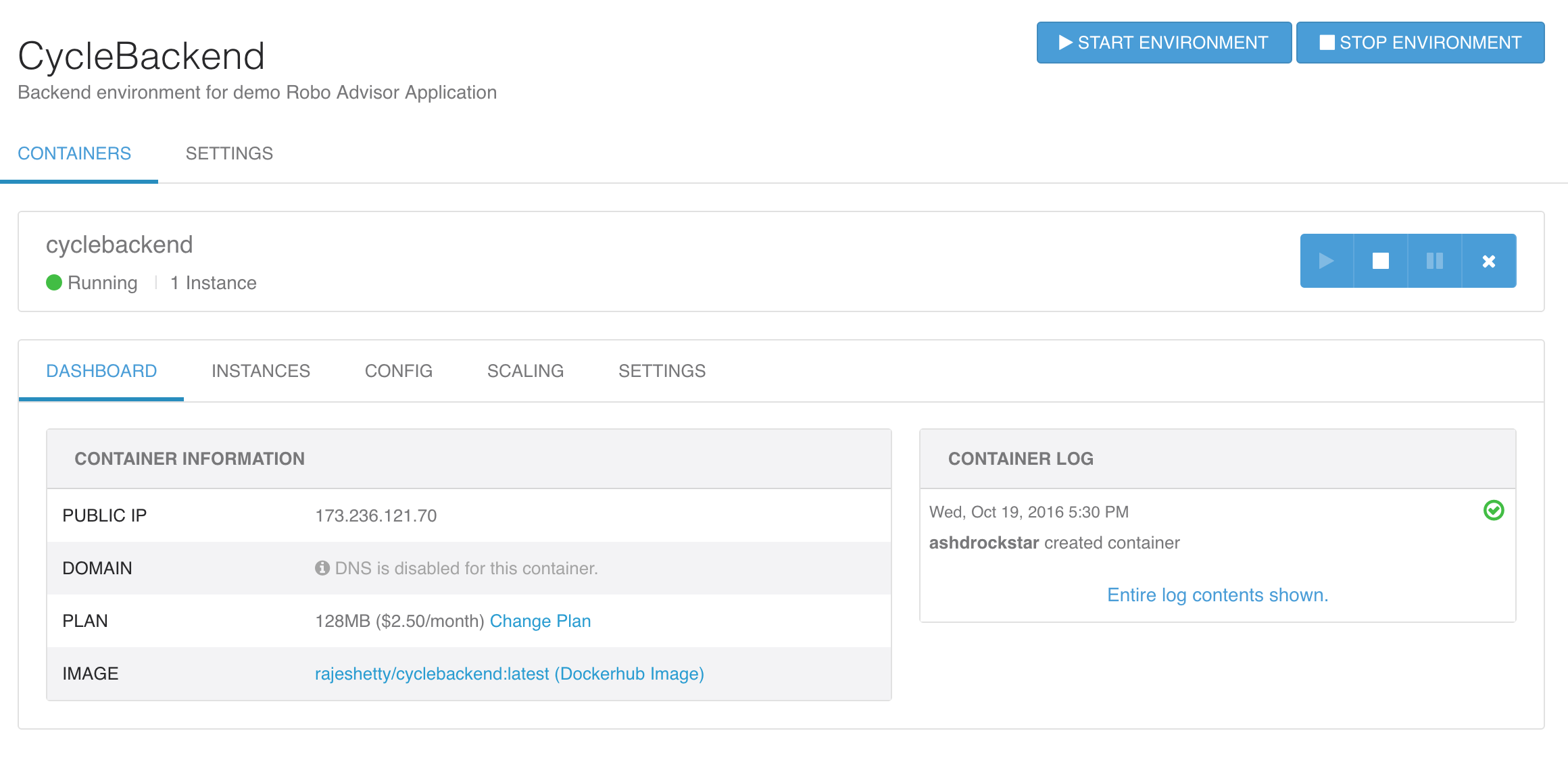
What’s next?
This was the most basic example how you can use the cycle platform, but with their API docs you can provision new containers and unleash docker on bare metal using libraries of Go and Typescript.